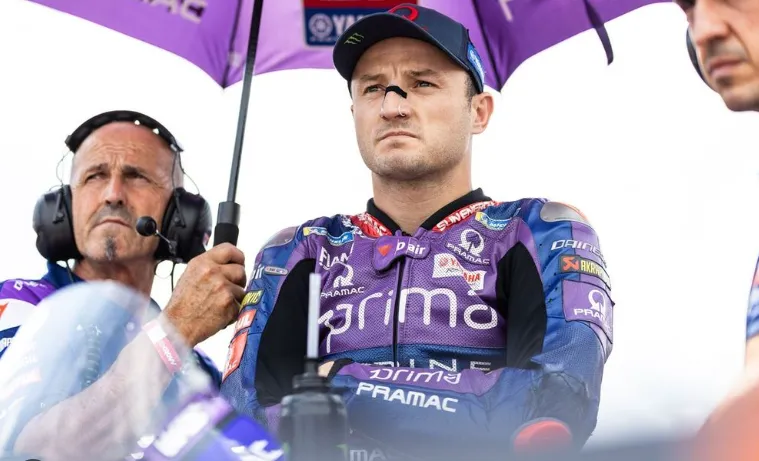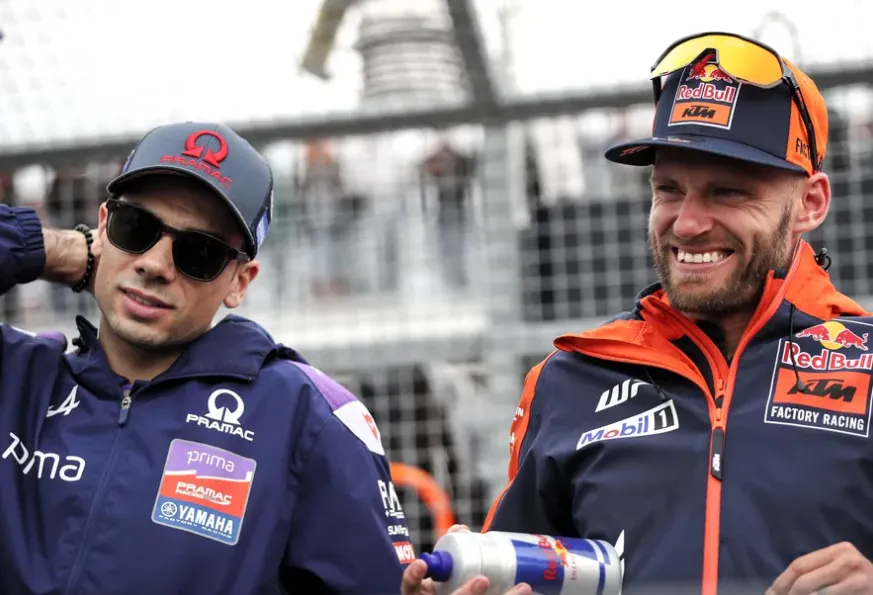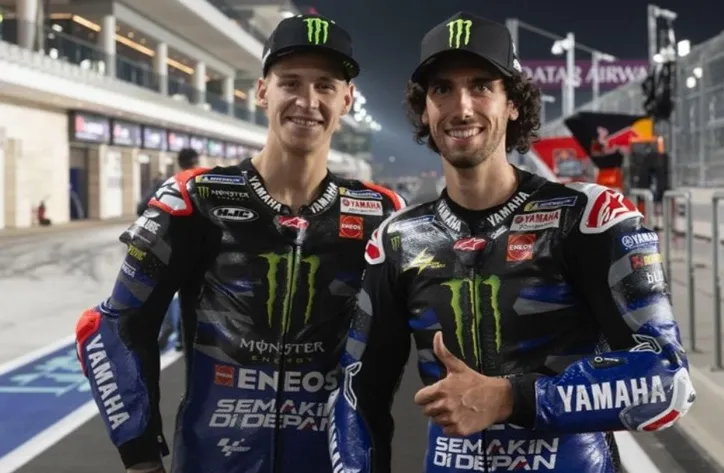

Mugello reveals the truth: Quartararo is exhausted both physically and mentally because of Yamaha.
The Mugello Circuit has long been a theater of speed, skill, and raw power in MotoGP—but for Fabio Quartararo, this year’s Italian Grand Prix turned into a painful reflection of a deeper crisis.
The Crumbling Journey at Mugello: From Hope to Despair
Starting the weekend with optimism, Quartararo gradually found himself battling not only the technical limits of his Yamaha YZR-M1, but also the emotional and physical toll that comes with racing a machine that no longer responds to his efforts.
Each lap of the race grew heavier. What began as a promising start faded into despair, culminating in a finish at P14—a result that would have been unthinkable during his championship days. And yet, it is now becoming a regular occurrence in 2025. At Mugello, Quartararo didn’t just lose a race—he lost part of his confidence, trust, and endurance as the bike repeatedly betrayed his inputs.
Quartararo himself summed it up starkly post-race: “Every lap was worse and worse.” His words weren’t just frustration—they were a cry for help from a champion who feels abandoned by his machinery and its development trajectory.
Physically and Mentally Broken: The Price of Riding Yamaha
After Mugello, it became painfully obvious that Fabio Quartararo is not just fighting the pack—he’s fighting his own body and mind. The effort required to control Yamaha’s increasingly unpredictable race bike is wearing him down, not just across a race weekend but across an entire season.
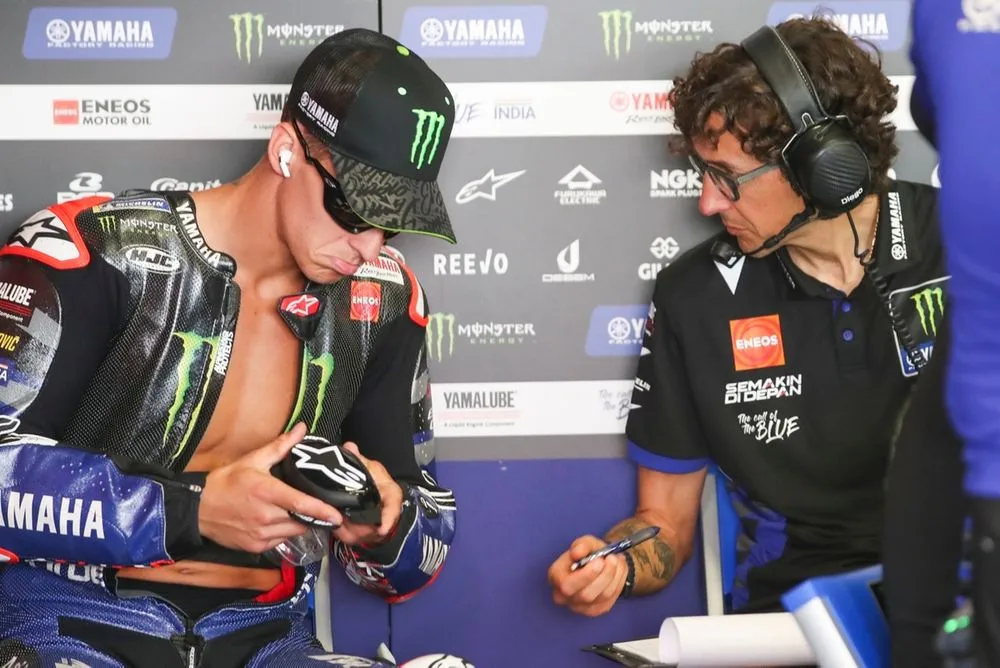
Riders often speak about physical fatigue from the forceful braking, cornering, and acceleration in MotoGP. But for Quartararo, the mental strain of knowing the bike won’t hold up under pressure is perhaps even greater. Every time he enters a corner, the grip may or may not be there. Each throttle twist is a gamble. He’s spending more time correcting the bike’s flaws than focusing on racecraft.
This erosion of energy has made him visibly weary. His body language in the paddock, slumped posture in interviews, and the tired tone in his voice all hint at a rider who’s no longer being fed by performance—but instead being drained by disappointment.
Yamaha’s Inconsistency: A Rollercoaster That Never Stabilizes
The true culprit behind Quartararo’s fall from grace is not a single defect—it’s the wild inconsistency of Yamaha’s entire race package. The YZR-M1 can start strong on Friday, set decent times in qualifying, and still completely collapse during the race. And for Quartararo, that unpredictability is a nightmare.
On paper, Yamaha still has strengths. Their front-end stability allows for sharp entries and clean apexes. But that means little when the rear tire won’t grip, and the bike’s balance breaks down after just a few laps. The Mugello GP was a perfect case study. Quartararo felt he had a rhythm during the early laps, but once tire degradation kicked in, the bike turned hostile.
This “good bike, bad bike” duality has become a pattern. Yamaha will look promising in warm-up, only to fall apart in race conditions. Quartararo has even compared it to “being a spectator in his own race,” watching as the rest of the grid passes him while he clings on for points.
Post-Race Honesty: Quartararo Speaks What Fans Feel
Fabio Quartararo’s post-race comments are no longer filled with optimism or diplomatic restraint. Instead, they echo the frustration of fans and insiders who see a champion being squandered.
In Mugello, he didn’t mince words. He described the performance drop as “horrible”, questioning how Yamaha could allow such massive pace drop-offs after only a few laps. He even questioned whether Yamaha had any true direction left—suggesting that even the engineers might be lost in their development maze.
His honesty is refreshing—but it also reflects a deepening disconnect between Quartararo and the Yamaha project. He is no longer defending the bike or the team. He is demanding answers. And if he doesn’t get them, it’s clear his future with the factory will be short-lived.
Riding Blind: A Bike That Refuses to Communicate
One of the more disturbing trends in Quartararo’s Mugello experience was the bike’s refusal to give feedback. In MotoGP, riders must feel connected to the machine. The chassis, electronics, and tires all need to “talk” to the rider, offering cues on grip limits, braking thresholds, and throttle sensitivity.
But Quartararo revealed that by mid-race, the bike felt numb. It stopped communicating. He couldn’t tell when grip would come or go. He was essentially riding blind.
This is the worst condition for a top-tier rider. Confidence evaporates. Lap times fluctuate. Mistakes multiply. Quartararo found himself not just slow, but dangerously uncertain, unsure whether pushing harder would lead to points or disaster.
A Losing Battle Against the Ducati Army
While Yamaha stalls, Ducati dominates. Mugello was yet another display of how far the Bologna-based manufacturer has leaped ahead. Their bikes have raw power, refined electronics, and unmatched rear grip—precisely the ingredients Yamaha lacks.
Quartararo could only watch as the Ducatis blasted out of corners with ease, braking later, accelerating harder, and defending with superior straight-line speed. And it’s not just the factory Ducati team—satellite riders like Jorge Martin and Marco Bezzecchi are outperforming Quartararo with regularity.
This dynamic only deepens Fabio’s mental fatigue. He’s not just battling Yamaha’s flaws—he’s outnumbered by better-equipped enemies on every corner of the circuit.
Skepticism About Yamaha’s Promised V4 Revolution
In response to ongoing criticism, Yamaha has hinted at a switch to a V4 engine configuration, expected sometime in the next development cycle. While this would mark a major shift in philosophy, Fabio Quartararo isn’t buying into the hype just yet.
He has expressed doubts that this long-promised upgrade will fix the deeper issues at play—mainly Yamaha’s flawed approach to chassis balance, rear-end grip, and long-run race consistency. Quartararo knows that a new engine alone won’t save the ship if the surrounding systems aren’t aligned.
His skepticism isn’t unjustified. Yamaha’s recent history of introducing upgrades that solve nothing—or worse, add new complications—has left Quartararo cautious. At this point, he wants proof, not promises.
Is Fabio Running Out of Patience—and Time?
The big question now looming over the paddock: How much longer will Quartararo endure this? With his contract ending soon, rumors of a possible switch to another factory—perhaps KTM or Aprilia—are gaining momentum.
Yamaha’s performance crisis isn’t just affecting race results—it’s impacting rider retention, team morale, and sponsor confidence. If Quartararo decides he’s had enough, it would be a massive blow to the team’s prestige and future.
There’s still time to fix things. But time, like grip, is slipping away.
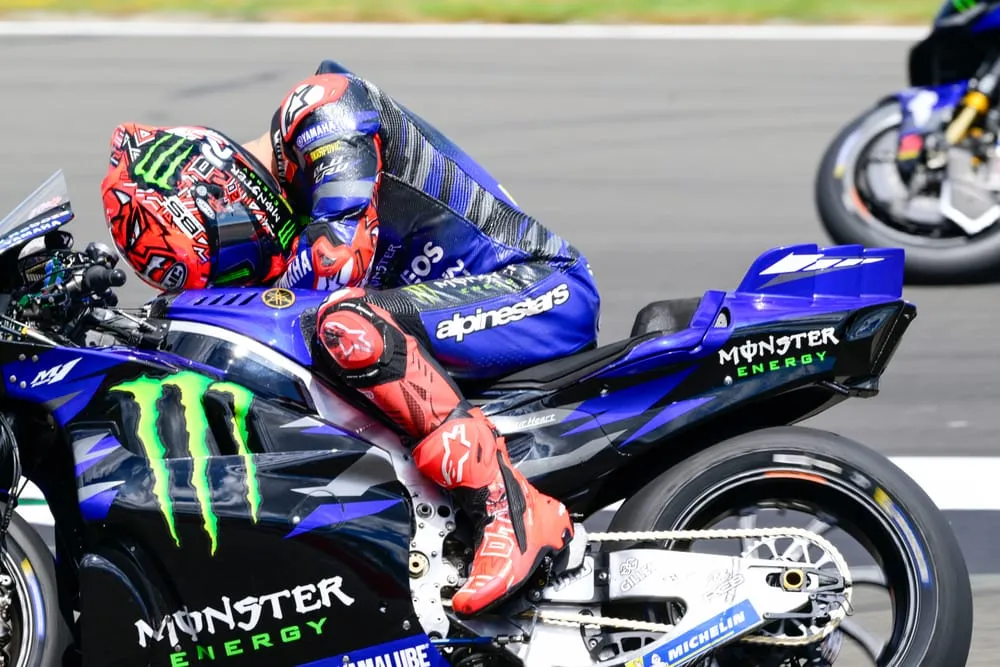
A Lesson in Grit and Frustration for Fans
For fans of Fabio Quartararo, Mugello was painful—but it was also revealing. It showed that even the most elite riders can be brought to their knees by technical failure. It also highlighted Quartararo’s resilience. Despite his exhaustion, he still crossed the line, still gave feedback, and still faced the media with brutal honesty.
His Mugello meltdown isn’t a sign of weakness—it’s a symptom of a deeper rot within Yamaha’s program. And unless that rot is cut out, even a champion like Quartararo can’t prevent collapse.
Final Thoughts: Will Yamaha Respond Before It’s Too Late?
Fabio Quartararo’s struggles at Mugello are no longer just bad luck or an off day—they’re a flashing warning sign. Yamaha is failing its top rider, and unless urgent structural and technical reforms are implemented, they risk losing him altogether.
Quartararo has shown incredible professionalism and grit, but he can’t race on frustration forever. If Yamaha doesn’t deliver change—and soon—MotoGP might see its 2021 champion racing in new colors by 2026.
Because in the world of elite racing, talent needs tools—and right now, Quartararo is being asked to fight with none.








